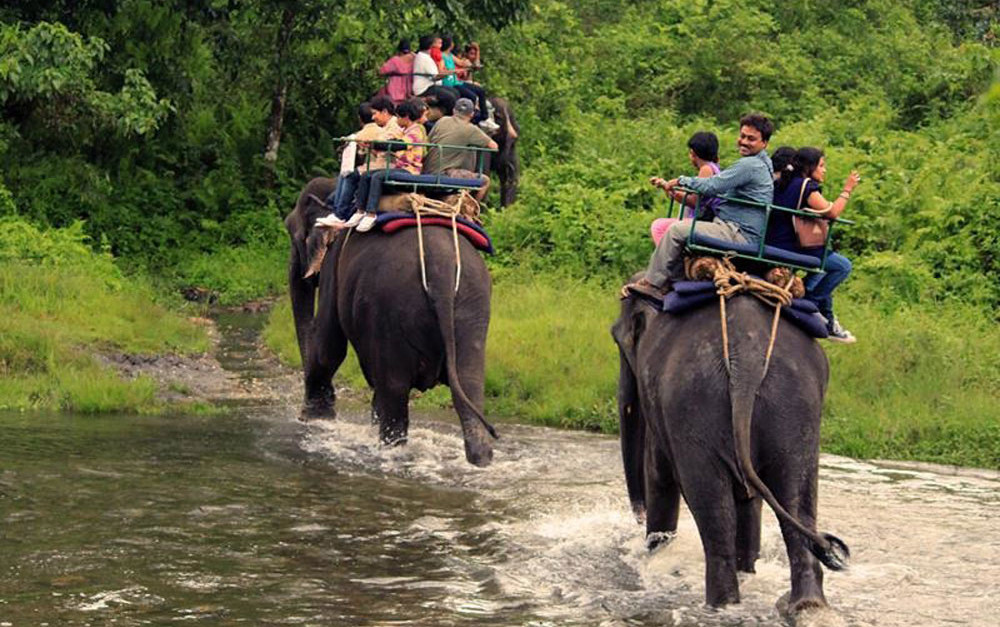
Table of Contents
Introduction Jaldapara National Park
Nestled against the backdrop of the Eastern Himalayas, Introduction Jaldapara National Park, formerly known as Jaldapara Wildlife Sanctuary, is a remarkable testament to the natural beauty and diverse wildlife of West Bengal, India. This expansive sanctuary, situated in Alipurduar Sub-Division of the Jalpaiguri District, spans over 216.51 square kilometers of sprawling grasslands and meandering riverine forests. Jaldapara National Park’s close proximity to the Torsa River, at a distance of approximately 124 kilometers from Siliguri, further enhances its ecological significance and captivating landscapes.
It was declared a sanctuary in 1941 for protection of its great variety flora and fauna.
A Sanctuary of Biodiversity
Established as a sanctuary in 1941, Jaldapara National Park was conceived with a primary goal: to safeguard the rich tapestry of flora and fauna that graces its lands. The park’s strategic elevation, standing at 61 meters, contributes to the remarkable diversity of life it nurtures. Over the years, Jaldapara has evolved into a refuge for numerous species, including the awe-inspiring Indian one-horned rhinoceros. This majestic creature, teetering on the brink of extinction, has found a secure sanctuary within the park’s borders, rendering it a pivotal hub for dedicated conservation endeavors.
It is about 124 km from Siliguri and on the bank of the Torsa River.
Preserving the Indian One-Horned Rhinoceros
Jaldapara National Park proudly claims the distinction of harboring the largest population of Indian one-horned rhinoceros in the state of West Bengal. This significant achievement underscores the park’s unwavering commitment to the preservation of endangered species and the delicate equilibrium within its ecosystem. The park’s designation as a Habitat Management Area further reinforces its dedication to ensuring the survival and flourishing of these magnificent beings.
The Vital Chilapata Connection
Adjacent to Introduction Jaldapara National Park lies the Chilapata Forests, a vital corridor that bridges the gap between Jaldapara and the Buxa Tiger Reserve. This natural passage plays a pivotal role in facilitating the movement of wildlife between these crucial conservation zones. The harmonious coexistence of these ecosystems serves as a poignant reminder of the interdependence of nature and the concerted efforts undertaken to safeguard its sanctity.
Historical Significance and Indigenous Heritage
Prior to the 19th century, the region encompassing Jaldapara National Park was inhabited by the Toto and Mech tribes, also known as the Bodos Tribe. This area, referred to as “Totapara,” has borne witness to the ebb and flow of human civilization around, leaving behind a rich tapestry of historical and indigenous importance in the area. Jaldapara Wildlife Sanctuary, established in 1941, was born from a collective resolve to conserve not only the majestic creatures that roam its expanse, but also the narratives and traditions that have shaped its past.
Embracing National Park Status
The culmination of years of unwavering conservation efforts came to fruition in May 2012, as Jaldapara Wildlife Sanctuary was officially bestowed with the esteemed designation of a national park. This elevation in status reaffirmed the park’s role as a bastion of biodiversity and emphasized its pivotal contribution to the broader realm of wildlife preservation.
Introduction Jaldapara National Park Conclusion
Jaldapara National Park stands as a living testament to the intricate beauty of the natural world and the resolute commitment of humanity to its safeguarding nature. Poised at the crossroads of history, culture, and ecology, this sanctuary of life continues to captivate the hearts and minds of those who venture into its embrace nature. As we celebrate its journey from a sanctuary to a national park, we concurrently honor the diverse tapestry of life it shelters and reiterate our collective responsibility to ensure its flourishing existence for generations to come.
